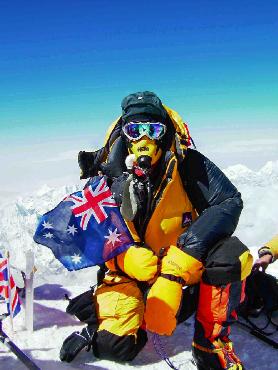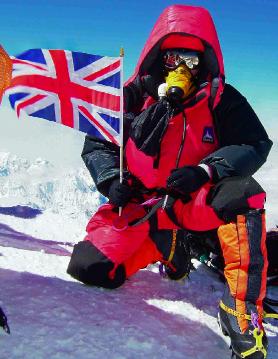 |
|||
|
||||||||||||||||||||||||||||||||||||||||||||||||||||||||||||||||||||||||||||||||||||||||||||||||
 |
Height: 8,850 metres / 29,035 feet OUR CLIMB …Summit date: 24th May 2004 BACKGROUND …It has only recently become known by its more familiar name of ‘Everest’ since 1852 when surveyors discovered it was the world’s highest mountain. It was named after the former surveyor general Sir George Everest. Locally it is still known by it’s more traditional names ‘Sargamatha’ (Goddess of the sky) by the Nepalese Sherpa people and ‘Chomolungma’ (Goddess Mother of the earth) by the Tibetans. As soon as Everest was confirmed as the highest mountain in the world, people began to wonder if it could be climbed and if humans could survive at its highest elevations. In 1875 in pursuit of this question, three French scientists flew a balloon to the same height as Everest but due to rising quickly they all passed out and sadly two never woke again. According to National Geographic Everest grows by 4mm every year, due to the continued collision of the Asian and Indian tectonic plates forcing the summit of Everest higher. The rarefied atmosphere at the top of Everest contains just one third as much oxygen as it does at sea level and scientists believe that Everest is at the limit of human capability and to go any higher would require a pressurised suit to prevent certain death. Every year, only a small window of opportunity presents itself when the weather is settled enough to allow climbers to attempt to summit. This is usually just a few days in the month of May when the temperatures are warmer, the jet stream has lifted and before the monsoon snows have hit. The jet streams that blast Everest’s summit for most of the year create the characteristic white plume that is seen blowing from the summit pyramid. The winds in this current can reach up to 250mph and they generate the same noise as a 747 taking off. Despite earlier attempts, with Mallory and Irvings disappearance in 1924 being particularly notable, the first ascent was made in 1953 by Tenzing Norgay and Edmund Hillary. Ever since then, Everest has been the icon of many mountaineers dreams and at the epicentre of many exciting and sometimes tragic adventures. Everest will always be a dangerous place and despite the hundreds of successful ascents by both westerners and sherpas, it has still claimed the lives of nearly two hundred people. Everest’s massive pyramid towers over everything else on this planet and it will always be a source of fascination for man but we should never forget to give her all the respect that is due. |
|||||||||||||||||||||||||||||||||||||||||||||||||||||||||||||||||||||||||||||||||||||||||||||||
 |
||||||||||||||||||||||||||||||||||||||||||||||||||||||||||||||||||||||||||||||||||||||||||||||||
|
